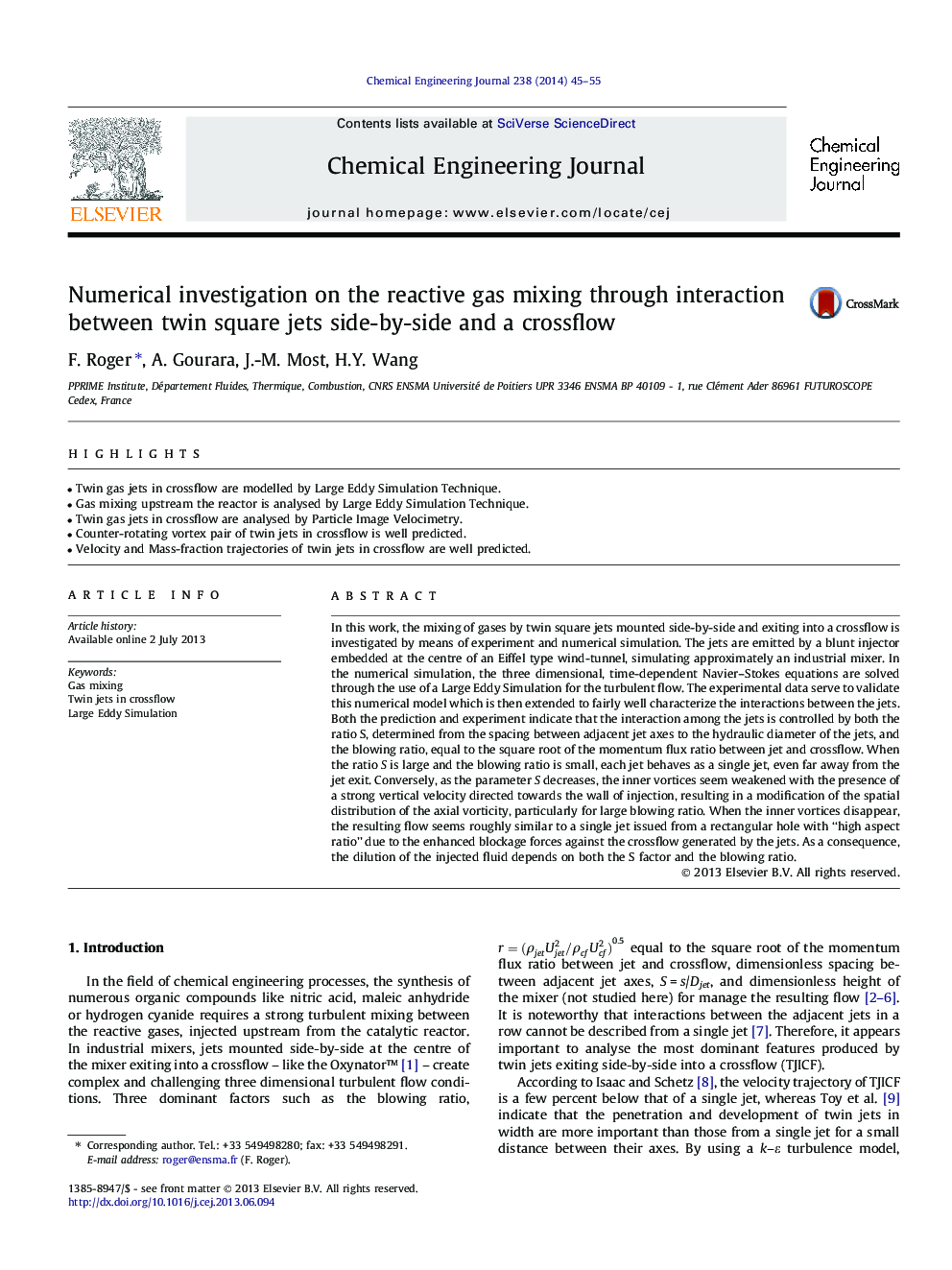| کد مقاله | کد نشریه | سال انتشار | مقاله انگلیسی | نسخه تمام متن |
|---|---|---|---|---|
| 148036 | 456404 | 2014 | 11 صفحه PDF | دانلود رایگان |
• Twin gas jets in crossflow are modelled by Large Eddy Simulation Technique.
• Gas mixing upstream the reactor is analysed by Large Eddy Simulation Technique.
• Twin gas jets in crossflow are analysed by Particle Image Velocimetry.
• Counter-rotating vortex pair of twin jets in crossflow is well predicted.
• Velocity and Mass-fraction trajectories of twin jets in crossflow are well predicted.
In this work, the mixing of gases by twin square jets mounted side-by-side and exiting into a crossflow is investigated by means of experiment and numerical simulation. The jets are emitted by a blunt injector embedded at the centre of an Eiffel type wind-tunnel, simulating approximately an industrial mixer. In the numerical simulation, the three dimensional, time-dependent Navier–Stokes equations are solved through the use of a Large Eddy Simulation for the turbulent flow. The experimental data serve to validate this numerical model which is then extended to fairly well characterize the interactions between the jets. Both the prediction and experiment indicate that the interaction among the jets is controlled by both the ratio S, determined from the spacing between adjacent jet axes to the hydraulic diameter of the jets, and the blowing ratio, equal to the square root of the momentum flux ratio between jet and crossflow. When the ratio S is large and the blowing ratio is small, each jet behaves as a single jet, even far away from the jet exit. Conversely, as the parameter S decreases, the inner vortices seem weakened with the presence of a strong vertical velocity directed towards the wall of injection, resulting in a modification of the spatial distribution of the axial vorticity, particularly for large blowing ratio. When the inner vortices disappear, the resulting flow seems roughly similar to a single jet issued from a rectangular hole with “high aspect ratio” due to the enhanced blockage forces against the crossflow generated by the jets. As a consequence, the dilution of the injected fluid depends on both the S factor and the blowing ratio.
Journal: Chemical Engineering Journal - Volume 238, 15 February 2014, Pages 45–55
